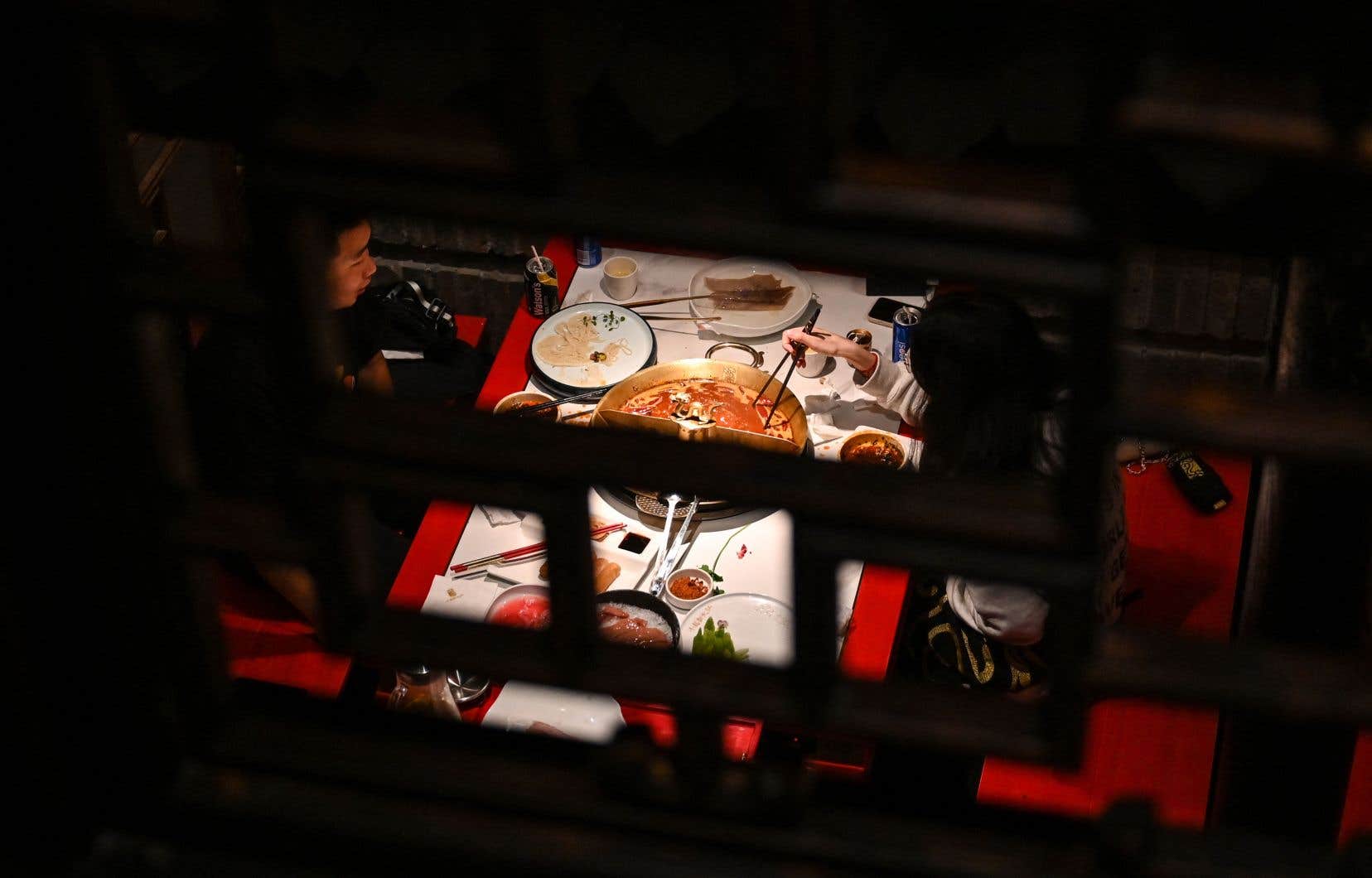In China’s hotpot capital, Chengdu, restaurant customers dip slices of meat and vegetables into a spicy, oily broth. Without realizing that their remains will have a second life as aircraft fuel.
Each year, establishments in Chengdu, capital of Sichuan province (southwest China), where fondue is a regional pride, produce 150,000 tonnes of waste from this red and greasy liquid.
A boon for the local company Jinshang, which processes this precious broth. After filtering, it is exported before being transformed into fuel for the airline industry.
“Our motto is: “Let used oil fly to the heavens!” », Tells AFP Ye Bin, the boss of Jinshang.
His company produces up to 150,000 tonnes of industrial quality oil each year, using fat from fondue broths, but also from other establishments in Chengdu, such as fast food chains KFC.
Every evening, Jinshang collection agents go on tour to hundreds of restaurants in the city.
As soon as the customers leave, the servers pour the broths into a filter to separate the oil from the water.
Dressed in thick aprons and elbow-length rubber gloves to protect themselves from the scarlet grease, the collectors then collect these jerry cans of acrid liquid.
“It’s a great job!” I play mahjong during the day and I work at night,” one of these agents, Mr. Zheng, rejoiced to AFP, loading cans of the thick mixture into a utility vehicle.
Mountains of garbage
This sludge is transported to the Jinshang plant, on the outskirts of Chengdu.
They are then poured into huge vats before undergoing a refining process which eliminates the remaining water and impurities. Result: an industrial quality oil, light yellow color.
This product is then exported to customers based mainly in Europe, the United States and Singapore. They are the ones who then transform it into “sustainable aviation fuel” (CDA).
This type of fuel can play a role in reducing the carbon footprint of the aviation sector, which accounted for 2% of global carbon dioxide (CO2) emissions linked to energy consumption in 2022, according to the International Energy Agency. energy (IEA).
However, CDA represents less than 0.1% of the fuels currently used by aircraft. The reason: processing costs and the low number of suppliers.
At the cost of a “massive increase in production”, they could however “contribute around 65% to the reduction in emissions necessary for the aviation sector to reach net zero emissions in 2050”, according to the International Air Transport Association (Iata).
Jinshang now aims to build its own CDA production facility.
China is doubling its efforts to try to combat the mountains of food waste generated by its 1.4 billion inhabitants.
Gluttonous maggots
Around 350 million tonnes of agricultural products, or more than a quarter of annual production, are wasted each year in the country by restaurants, supermarkets or consumers, according to a study published in the journal Nature in 2021.
In landfills, rotting food waste emits methane, a greenhouse gas, faster than most other materials, according to the U.S. Environmental Protection Agency.
China recently published a plan to combat methane emissions, which includes the construction of innovative projects to treat food waste.
Shanghai, for example, uses the larvae of “black soldier flies” (Hermetia illucens) to recover this waste.
At the Laogang processing plant, a huge room houses 500 million maggots, which devour up to 2,500 tonnes of food scraps daily, explains Wu Yuefeng, the site’s deputy director.
When defecating, these larvae excrete a substance used as fertilizer. They themselves, once well fattened, are transformed into animal feed
